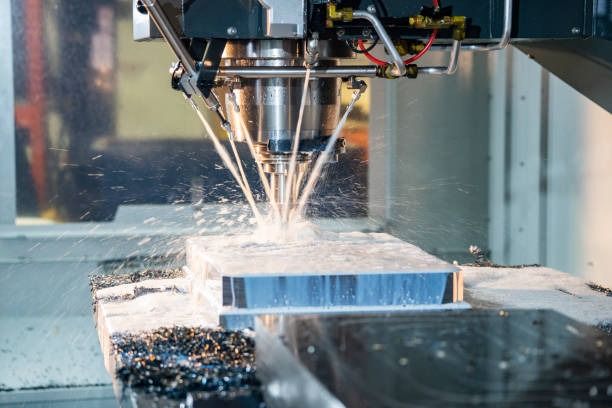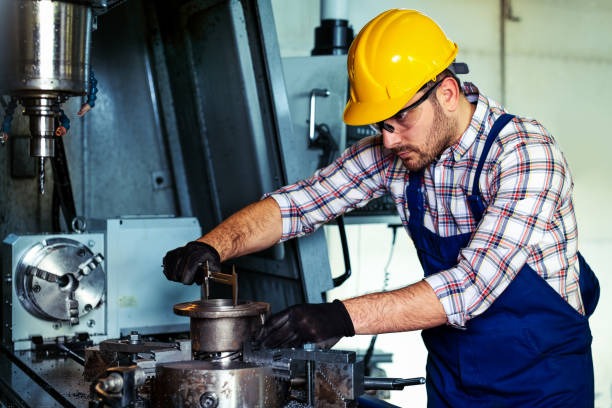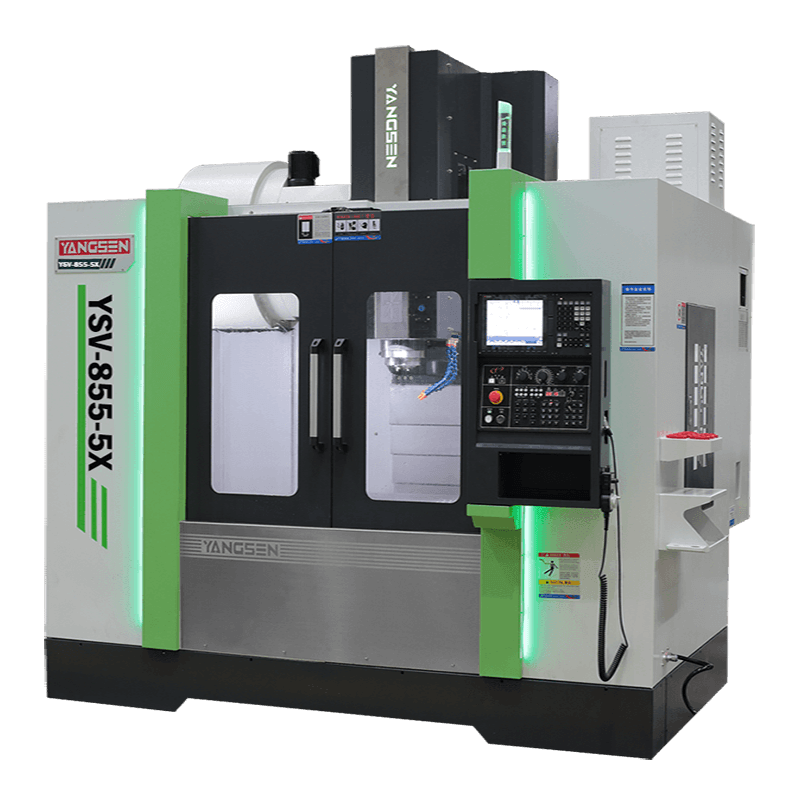CNC milling machines have become an essential part of modern manufacturing, providing the precision, efficiency, and flexibility required in industries such as aerospace, automotive, mold making, and general engineering. By automating complex cutting operations through computer numerical control, these machines are capable of producing highly accurate and repeatable components, even for intricate designs and tight tolerances. However, like any advanced manufacturing technology, CNC milling machines present both benefits and limitations. In this article, we will explore the key advantages and disadvantages of CNC milling machines, helping manufacturers, engineers, and decision-makers evaluate whether this technology is the right fit for their production needs.
A CNC milling machine (Computer Numerical Control milling machine) is an advanced manufacturing tool used to cut and shape materials with high precision. Unlike traditional manual milling machines, CNC milling machines are operated by pre-programmed software, allowing for automatic and highly accurate movements. These machines are capable of producing complex geometries, intricate details, and tight tolerances, which are essential for industries such as aerospace, automotive, and medical device manufacturing.
Spindle: The spindle is the rotating component that holds the cutting tool and provides the necessary motion to perform the cutting operations. A motor drives it and operates at high speeds, depending on the material and tool type.
Tool Holder: This component securely holds the cutting tool in place while the machine operates. The tool holder can be designed for specific types of tools, such as end mills, drills, or taps.
Worktable: The worktable is where the material (usually a metal, plastic, or composite) is placed during the milling process. It is often equipped with clamps or a vise to hold the material in position.
Control System: The control system (usually a computer with specialized software) directs the movement of the machine. It converts digital CAD (Computer-Aided Design) files into machine instructions through a process known as G-code, ensuring that the machine follows the exact specifications of the design.
CNC milling machines operate by moving a rotating cutting tool (or tools) along multiple axes (usually 3, 4, or 5 axes) to remove material from a workpiece. The movement of the tool is highly controlled and precise, based on the programmed instructions. During the milling process, the tool removes material in small increments, leaving behind a smooth, accurate surface according to the design specifications.
There are different types of CNC milling machines based on their configuration and capabilities:
3-Axis CNC Milling Machine: This is the most common type, where the tool moves along three axes—X, Y, and Z. It is suitable for simple to moderately complex parts.
4-Axis CNC Milling Machine: In addition to the three linear movements (X, Y, and Z), a 4-axis machine has an additional rotational axis, which allows for more complex part shapes and the ability to machine multiple sides of a workpiece in one setup.
5-Axis CNC Milling Machine: The most advanced type, capable of rotating along two additional axes. This provides maximum flexibility and is typically used for high-precision, complex aerospace or medical components.
CNC milling machines offer a wide range of benefits, making them a preferred choice for many industries. From high precision to improved efficiency, these machines bring substantial advantages to the manufacturing process. Below are the key advantages of using CNC milling machines:

One of the most significant advantages of CNC milling machines is their ability to achieve incredibly high precision and repeatability. These machines can produce parts with tolerances as tight as ±0.01mm, making them ideal for industries that require exacting standards, such as aerospace, medical devices, and automotive manufacturing.
CNC milling machines are designed for high-speed, automated operation, significantly improving productivity compared to traditional manual machining. The ability to run the machine continuously, 24/7 (with proper maintenance), allows manufacturers to meet tight deadlines and achieve higher output levels. Additionally, CNC milling machines can perform multiple operations—such as drilling, boring, and tapping—in a single cycle, reducing the need for multiple setups and decreasing overall lead time.
Whether it's intricate 3D surfaces, detailed slots, or undercuts, CNC milling can handle it all. These machines are highly versatile and can work with a variety of materials, including metals, plastics, and composites, making them suitable for industries with a wide range of production needs.
Unlike manual machines that rely heavily on operator skill, CNC milling machines are automated and programmed with specific instructions. This reduces the possibility of human error, ensuring that the parts are produced to exact specifications. Furthermore, because the operator is not directly involved in the machining process, the risks associated with manual operations, such as accidents and injuries, are minimized.
CNC milling machines are highly scalable, which means they can be used for both small-batch production and large-scale manufacturing runs. Whether you need to produce a single prototype or thousands of identical parts, CNC machines can easily adapt to different production volumes. The use of digital programming also allows for fast adjustments to the machine’s setup, making it easy to switch between different parts or designs.
While the initial cost of a CNC milling machine may be high, the long-term benefits far outweigh the initial investment. The precision and efficiency of CNC machines lead to reduced material waste, lower labor costs, and less need for rework, all of which help to cut production costs over time. Additionally, CNC milling machines have lower maintenance costs compared to manual machines, and their ability to run for extended periods without supervision further improves their cost-effectiveness.
While CNC milling machines offer many advantages, they also come with certain disadvantages that manufacturers must consider. These drawbacks are primarily related to the initial cost, the need for skilled operators, and ongoing maintenance. Understanding these disadvantages will help companies make informed decisions about investing in CNC milling technology. Here are the key disadvantages:
The initial cost of purchasing a CNC milling machine is one of the main drawbacks. The machine itself, along with installation, setup, and training costs, can be significant. For small businesses or startups, this capital outlay can be a barrier to adopting CNC technology. Additionally, high-performance machines with multiple axes or advanced capabilities often come at a higher price. Though the long-term benefits and return on investment (ROI) can be substantial, the upfront expense is a challenge for many businesses.
CNC milling machines require ongoing maintenance to keep them running smoothly. These machines have many moving parts that can wear out over time, such as spindles, motors, and tool holders. Regular servicing is essential to prevent downtime and costly repairs. Though CNC machines are generally more durable than manual machines, the maintenance costs—such as replacing worn-out tools, lubricants, and mechanical components—can add up.

CNC milling machines are energy-intensive, especially when running for extended periods. Compared to manual machining, these machines consume more electricity due to their automated and high-speed operations. In industries where production runs continuously or in large volumes, energy costs can significantly impact the overall cost of operations.
CNC milling machines are driven by pre-programmed instructions, which means that making immediate design or operational changes can be more time-consuming than with manual machines. If a design needs to be modified quickly, the operator must update the program, reconfigure the machine, and test the new setup. This process can lead to delays, particularly if the change involves complex or custom designs.
Selecting the right CNC milling machine for your business is crucial to ensuring both efficiency and cost-effectiveness in your manufacturing operations. With a wide range of machine types and features available, making an informed decision requires evaluating several key factors. Below are the essential steps and considerations to help you choose the ideal CNC milling machine for your needs.
The first step in selecting a CNC milling machine is understanding your production volume and specific requirements. Different machines are designed for different production capacities, and choosing the wrong type can lead to inefficiencies and higher operational costs.
Low-Volume Production: If you're running low-volume, high-precision jobs (e.g., prototypes or custom parts), a 3-axis CNC milling machine may be sufficient. These machines are versatile, affordable, and suitable for a wide range of applications.
High-Volume Production: For large-scale production, you may need a more robust solution, such as a 5-axis CNC milling machine, which can handle more complex parts with higher precision and faster cycle times.
The type of material you plan to work with plays a significant role in selecting the right CNC milling machine. Different materials require different cutting speeds, tool types, and levels of precision.
Metals: If you're machining metals like aluminum, steel, or titanium, ensure that the CNC milling machine is equipped with a powerful spindle motor and heavy-duty construction.
Plastics and Composites: For softer materials like plastics or composites, a lighter, lower-power machine may suffice. Machines like mini CNC mills or benchtop mills are ideal for working with non-metal materials.
High-Performance Materials: For aerospace or medical-grade parts, look for CNC milling machines that offer exceptional precision, such as those with thermal stability and superior spindle control.
The specific capabilities of the CNC milling machine will depend on the complexity of the parts you need to produce. Some key factors to consider are:
Number of Axes:
3-Axis Milling Machines: These are suitable for basic operations like drilling, slotting, and boring. They are commonly used for simple parts with moderate complexity.
4-Axis Milling Machines: These machines add a rotational axis (usually around the X-axis) to provide greater flexibility for machining multiple faces of a part without re-fixturing. Ideal for parts that require more complex features like cylindrical cuts.
5-Axis Milling Machines: These are advanced machines that can simultaneously move along five axes. Perfect for intricate and complex parts with high precision. Commonly used in the aerospace, medical, and automotive industries.

Spindle Speed and Power: Higher spindle speeds are essential for cutting hard materials at faster rates. For softer materials, a lower-speed spindle might be sufficient. Consider the material and cutting speeds to determine the optimal spindle power.
Tool Capacity: Consider the tool changer capacity (e.g., how many tools the machine can hold) if you need to perform multiple operations in one cycle. Some machines have automatic tool changers for high-efficiency work, allowing you to switch between different tools without stopping production.
The control system is the brain of your CNC milling machine. It's important to choose a machine with an intuitive and reliable control system that fits your needs. The two most common control systems are:
Fanuc: Known for its high precision, stability, and long lifespan. It’s widely used in many CNC machines, especially those for complex and high-volume production.
Siemens: Offers highly customizable solutions, known for flexibility and ease of integration with advanced manufacturing setups.
Heidenhain: Known for its precise feedback systems and used in applications requiring extremely tight tolerances.
When choosing a control system, ensure that it supports the CAD/CAM software you're using and is compatible with the specific needs of your production.
CNC milling machines are game-changers in modern manufacturing, offering unmatched precision, speed, and flexibility. While the initial investment and maintenance requirements may seem steep, the long-term benefits—especially for high-volume, high-accuracy production—often far outweigh the drawbacks. Whether you’re in aerospace, automotive, or general engineering, the right CNC milling machine can elevate your production capabilities to new heights. Ready to explore your options? Contact us today to find your perfect fit.